| Gemstone Chart |
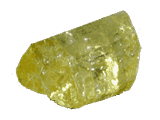 Natural Apatite Natural Apatite
Apatite displays strong fluorescence under short wave ultra-violet light. There is a particularly intense and deeply saturated, geenish-blue (aka swiss blue) variety from Madagascar known as "Neon Apatite" that is becoming quite popular in the gem trade.
Color: yellow, green, below, violet
Categories: semi-precious stone
Chemical Composition: Phosphate group
Crystal Group: Hexagonal
Refractive Index: 1.63-1.64
Hardness: 5
Density: 3.17-3.23
Occurrence: Burma, Ceylon, Madagascar, Mexico, Canada, India
| 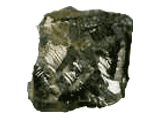 Natural Diamond Natural Diamond
Diamond is the ultimate gemstone, having few weaknesses and many strengths. It is well known that Diamond is the hardest substance found in nature.
Color: White, yellow, brown, black. Rarely, blue, red, or pink.
Categories: precious stone
Chemical Composition: C
Crystal Group: Cubic
Refractive Index: 2.417
Hardness: 10
Density: 3.52
Occurrence: Africa, Russia, Canada, Australia, India
| 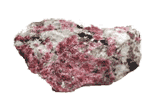 Natural Eudialyte Natural Eudialyte
eudialyte is a rare, plummy-red stone. Eudialyte's name comes from the Greek words "eu" and "dialytos", meaning "easy to dissolve" which refers to the mineral's solubility in acids.The stone's distinctive grey, black or white patterning gives each piece of jewelry a unique beauty.
Color: orange red
Categories: semi-precious stone
Crystal Group: Trigonal
Refractive Index: 1.596 - 1.602
Hardness: 5 - 6
Density: 2.88
Occurrence: Sweden; Kippaw,Canada
| 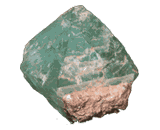 Natural Fluorite Natural Fluorite
Fluorite has a wide range of colors including yellow, blue, pink purple and green. It is an interesting and beautiful gemstone.
Color: Colorless, yellow, brown, green, blue, violet, pink
Categories: semi-precious stone
Chemical Composition: CaF2
Crystal Group: Cubic
Refractive Index: 1.43
Hardness: 4
Density: 3.18
Occurrence: Namibia, U.K., Switzerland, Nigeria, Czechoslovakia, Canada, Poland, Italy, Norway, Germany, U.S.A.
| 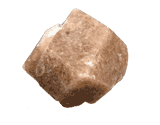 Natural Grossularite Natural Grossularite
A member of the garnet group, grossularite is found in a variety of colors including, yellow, brown, white, colorless, green, violet-red, and orangey red.
Color: Brown, yellow, green
Categories: semi-precious stone
Chemical Composition: Ca3Al2(SiO4)3
Crystal Group: Cubic
Refractive Index: 1.72-1.748
Hardness: 7.25
Density: 3.65
Occurrence: Canada, East Africa, Pakistan, New Zealand, Ceylon, South Africa, U.S.A.
| 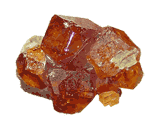 Natural Hessonite Natural Hessonite
Hessonite is one of the gem varieties of the garnet mineral, grossular. Hessonite is usually cinnamon brown and has been called "cinnamon stone". Hessonite can also be orange; this color is becoming common on the gem markets.
Color: Brownish-orange, brownish yellow, aurora red
Categories: semi-precious stone
Chemical Composition: Ca3Al2(SIO4)3
Crystal Group: Cubic
Refractive Index: 1.72-1.74
Hardness: 7.25
Density: 3.65
Occurrence: Sri Lanka, Mexico, Brazil, Canada, Madagascar
|  Natural Idocrase Natural Idocrase
Primarily a green color that will resemble jade.idocrase is one stone that is sometimes mistaken for jade by jewelers and consumers alike. Idocrase is from the greek and means mixed form, an allusion to its crystals showing a mixture of other mineral forms.
Color: normally green, but also can be brown, yellow, blue and/or purple.
Categories: semi-precious stone
Chemical Composition: nesosilicate or sorosilicate
Crystal Group: Tetragonal
Refractive Index: 1.71 - 1.73
Hardness: 6.5
Density: 3.3 - 3.5
Occurrence: Quebec, Canada; California and the New England region of USA; Mt Vesuvius, Italy; Ural Mountains, Russia, Switzerland, East Africa
| 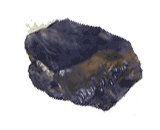 Natural Iolite Natural Iolite
Iolite is a popular and interesting gemstone, and is the gem variety of the mineral cordierite.It has also been called water sapphire because it looks very much like a blue sapphire.
Color: violet, blue, dark blue,
Categories: semi-precious stone
Chemical Composition: MG2AL4SI5O18
Crystal Group: Orthorhombic
Refractive Index: 1.53 - 1.55
Hardness: 7 - 7.5
Density: 2.57 - 2.66
Occurrence: Sri Lanka; Burma; India; Tsivory,Madagascar; Canada; Namibia; Tanzania; Norway; U.S.A.; Brazil
|
|
|




